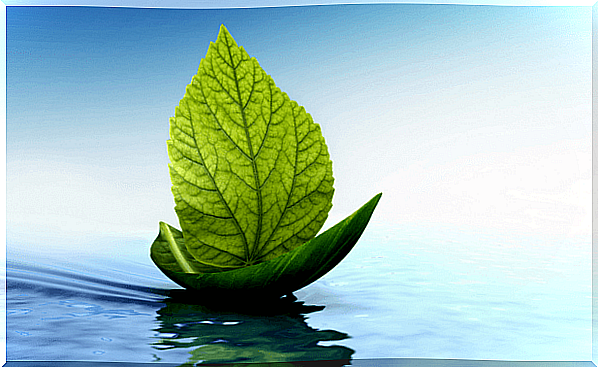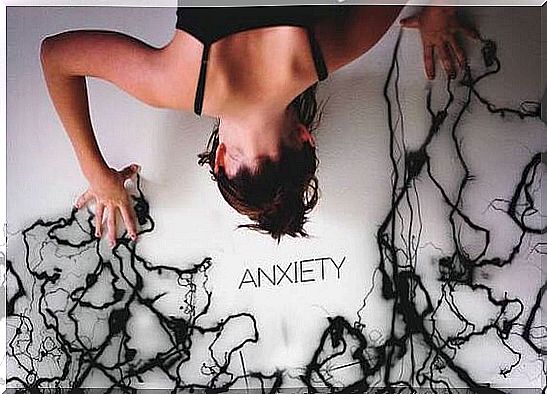A Simple Technique To Reduce Your Stress Level: Jacobson’s Progressive Relaxation

Of all the strategies that seek to reduce the physical impact of stress, Jacobson’s progressive muscle relaxation technique is one of the most effective. If we practice it repeatedly, it will be a great tool to progressively suppress all muscular tensions.
Something that is curious about this technique, created by Edmund Jacobson in 1920, is that once we learn to apply it, it instantly becomes a wonderful “pocket” resource, a tool that we can all use at any given moment to find calm in a stressful situation.
Situations as common as facing an exam, a conference or a job interview usually tend almost always with that feeling of alarm on the part of our brain, with which muscle tension, abdominal pain, tremors, dryness of mouth and those intrusive thoughts capable of taking away power and efficiency when executing any task.
Jacobson’s progressive relaxation allows us to focus all our attention on a series of muscular exercises where, little by little, tensions are relieved and above all, those disruptive ideas that generate discomfort and helplessness.
Next, we explain how to apply it in your day to day.

Jacobson’s progressive relaxation and its relationship to therapy
We have all lived a situation of specific stress or even more, we may currently be living a time of continuous and persistent anxiety. The good news is that you will be able to get rid of that anxiety, the less good news is that you will have to be constant applying the technique. Before we dive into it, we leave you three points that you can take into account.
- People who suffer from intense stress are characterized by having an overactive mind.
- These thoughts cannot always be controlled, and consequently neither can the behavior itself.
- Little by little, and almost without realizing it, we enter a vicious circle characterized by physical and mental exhaustion, emotional blockage, bad mood, anxiety and the inability to solve problems.
Jacobson’s progressive muscle relaxation technique as a “pre-therapeutic” strategy
Let’s take an example to understand the usefulness of Jacobson’s progressive relaxation. Miguel is a neurologist, an excellent professional who suffers from anxiety attacks every time he attends conventions, congresses or conferences where he is obliged to speak in public.
- The therapist he goes to has taught him to put Jacobson’s progressive muscle relaxation into practice to deal with this paralysis, those situations of high emotional intensity where he becomes completely blocked.
- This technique is nothing more than a “pre-therapeutic” strategy, because once the person achieves an adequate state of calm, it is when subsequent psychological therapy with the patient can be started to offer them adequate fear management strategies, personal safety, speaking …
Thus, as we can deduce, the strategy created by Edmund Jacobson allows us to achieve a state of mental calm through muscle relaxation. Once we achieve that internal balance, it is time to restructure thoughts, change approaches and sanitize our fears.

How to apply Jacobson’s progressive muscle relaxation
In addition to being a fabulous strategy to channel anxiety and reduce stress, Jacobson’s progressive muscle relaxation has multiple health benefits : it reduces blood pressure, promotes a deeper and more restorative rest, reduces seizures in epileptic people …
However, . Your benefits will be faster and more effective as we implement them. Here’s how to do it.

Relaxation sequence
The first thing we will do is e
- Hands. Close your hands tightly until you feel the tension.
- Shoulders. It is very simple, what we will do in this case is to shrug the shoulders gently upwards, towards the ears. Feel the tension for a few moments, hold that position for 5 seconds and then release and feel the rest… Repeat 5 times.
- Neck. Next, we will bring the chin to the chest for a few seconds, then relax.
- Mouth. Now, we will open our mouth and extend our tongue as much as possible for 10 seconds. Then relax. Then, instead of sticking the tongue out, we will bring it against our palate, feel the tension and relax.
- Breathing. We continue our relaxation exercise with a simple breathing exercise: take in air for 5 seconds, hold it for 6 seconds and exhale for 7 seconds. Very easy.
- Back. With the shoulders leaning against the back of the chair, we lean the body forward a little so that the back is arched; we hold that position for 10 seconds and then we relax.
- Feet. We finish our sequence by focusing on the feet. Stretch your fingers as if you were trying to stand on your toes. Note the tension for 10 seconds and then release and feel the relaxation.
Adequate conditions
Whenever we start with the practice of relaxation techniques, it is ideal to create a space for this purpose. Until we have a good command of a technique, it will be necessary to be in silence, in an environment that is as less stressful as possible. If possible, we will try not to be interrupted. Mindfulness in practice is important to feel its full effects.
Dedicating a specific room or space at home to practice can have several benefits. For example, if we associate a room in the house with the practice of relaxation, each time we enter it we will automatically relax. In the same way, when we begin to relax, we will also more quickly enter a deeper state of relaxation.
To conclude, it is necessary to practice this simple sequence on a daily basis, seeking a moment of calm and solitude to promote adequate muscle relaxation. In this way, it connects with the mind to calm it, relax it and become aware of our here and now, of our present needs. Thus, progressive muscle relaxation works and can become your best strategy to deal with any stressful situation.









